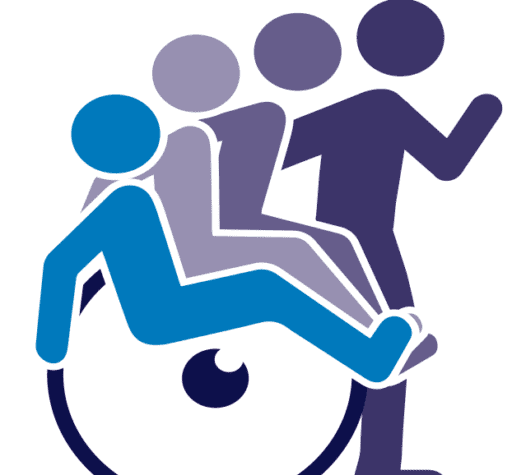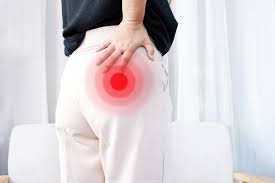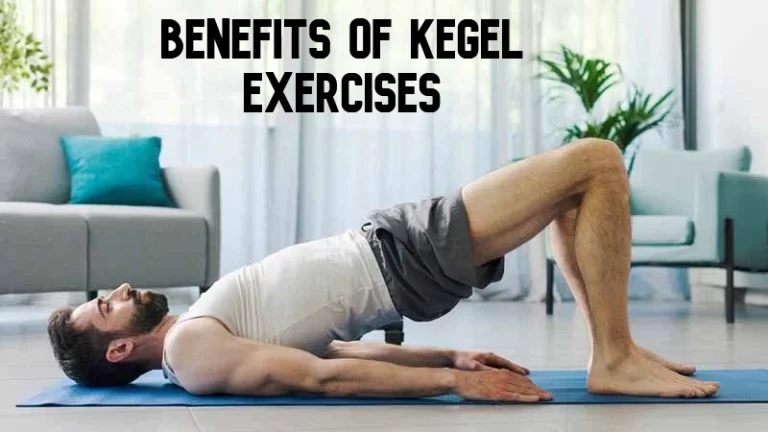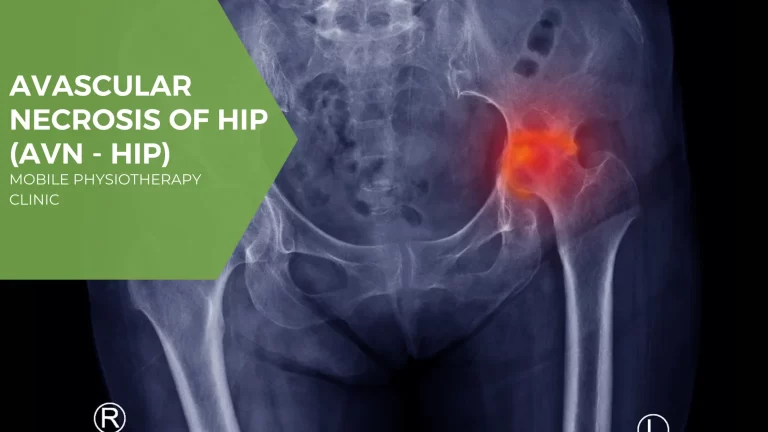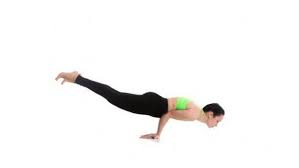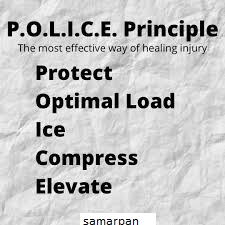How to Relieve Buttock Muscle Pain
Table of Contents
Introduction:
The pain can interfere with everyday duties and lower quality of life, regardless of the cause, prolonged sitting, overuse during physical exercise, poor posture, or underlying diseases such as sciatica or piriformis syndrome.
Aching, stiffness, or even severe pain that travels down the legs might result from these muscles being strained, tight, or inflamed. Fortunately, the majority of buttock muscle pain may be successfully treated at home with the correct mix of self-care techniques, physical activity, and lifestyle modifications.
Causes of Buttock Muscle Pain:
Muscle strain or overuse, sometimes caused by vigorous exercise, incorrect lifting techniques, or sudden movements that overload the gluteal muscles, is one of the most frequent reasons. In a similar vein, sciatica caused by a spinal problem or ruptured disc can cause sudden, intense pain in the buttocks.
Deep, severe pain can also be a symptom of inflammatory diseases like bursitis or arthritis, especially while moving or sitting for long periods. Muscle strain or nerve irritation in the buttocks can also be caused by bad posture, an incorrect walk, or trauma like falls. In certain instances, the pain could originate from the lower back or be the result of underlying illnesses that need to be evaluated by a specialist.
Symptoms of Buttock Muscle Pain:
Depending on the underlying reason, buttock muscle pain symptoms might vary, but they frequently involve a dull pain or soreness in one or both buttocks. Prolonged standing, sitting, or physical activity like walking, climbing stairs, or bending might worsen the pain.
Other typical symptoms include muscle stiffness, spasms, or soreness to the touch. The buttocks may tingle, go numb, or burn for some people, which might be a sign of nerve irritation or compression. The pain might be slight and bothersome or severe and incapacitating, affecting everyday activities and quality of life.
Treatment of Buttock Muscle Pain:
Relieving pain, lowering inflammation, and treating the underlying cause are the main goals of treatment for buttock muscle pain. Conservative home treatments work most of the time. To prevent further strain, rest and activity adjustment are crucial; this includes avoiding prolonged sitting or high-impact activities.
Buttock stress can be reduced with mild stretching techniques, including the piriformis stretch, figure-four stretch, and hamstring stretch. Recurrence can be avoided by performing core and glute strengthening exercises, such as clamshells and glute bridges.
Acetaminophen and ibuprofen are two examples of over-the-counter pain medications that may help control inflammation and pain. Tight areas in the muscles can be released by self-massage or foam rolling. Using standing desks or ergonomic chairs can help if the pain is caused by bad posture or extended sitting. It’s best to speak with a healthcare professional for severe or ongoing instances, particularly those with nerve compression like sciatica. They could suggest prescription drugs, physical therapy, or, in rare instances, surgery or injections. The secret to long-term comfort and healing is early treatment and consistent movement.
Exercises for Buttock Muscle Pain:
Piriformis Stretch:
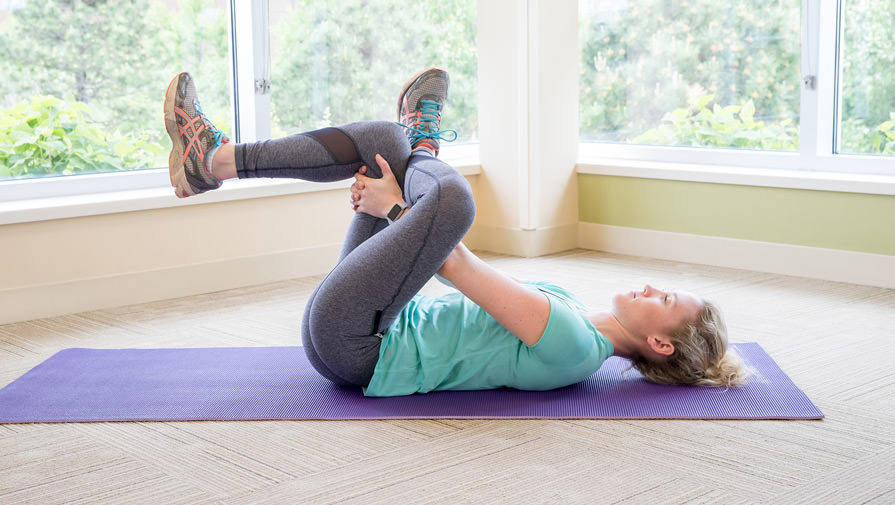
The piriformis muscle, which is situated deep in the buttock, may be gently and effectively relieved of stress with the piriformis stretch. The sciatic nerve may be compressed by this muscle’s tightness or inflammation, resulting in buttock pain that may spread down the leg. This stretch lessens nerve irritation, increases hip flexibility, and relaxes the muscle.
It is usually done on the back, with one leg crossed over the other thigh and the supporting leg softly drawn toward the chest. This posture is particularly helpful for people with piriformis syndrome or buttock pain because it targets the piriformis muscle and offers a deep, calming stretch to the gluteal region.
Figure Four Stretch:
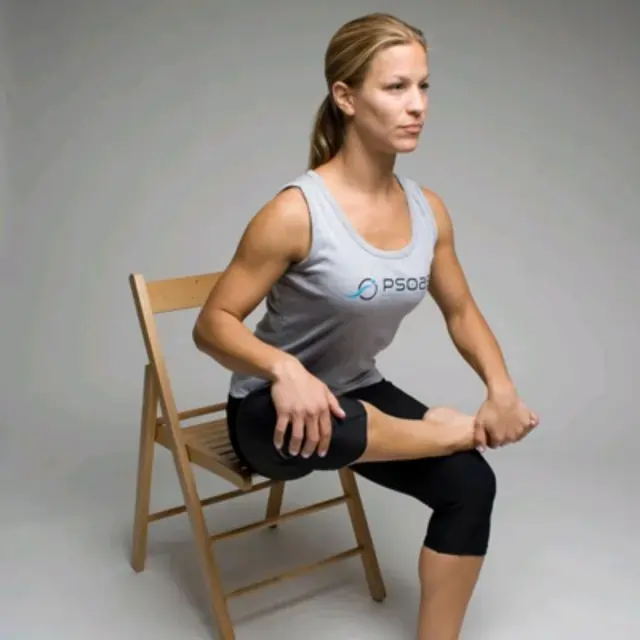
An excellent exercise for releasing tension in the buttock muscles, especially the piriformis and gluteal muscles, is the figure-four stretch. It is done by sitting or lying down with one leg crossed over the other thigh, and then slowly pulling the supporting leg toward the chest to deepen the stretch. Those who suffer from piriformis syndrome, buttock pain, or lower back pain caused by tight hip muscles can particularly benefit from it.
Seated Spinal Twist:
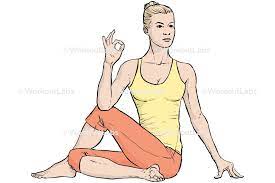
A mild stretching exercise that helps release tension and increase spinal mobility, the sitting spinal twist works the muscles in the lower back, hips, and buttocks. It is particularly helpful in treating buttock pain caused by tight muscles or compressed nerves, like in cases of sciatica or piriformis syndrome. This stretch creates a deep stretch in the spine and gluteal area by having the body rotate toward the bent knee as one leg is crossed over the other while seated. Regularly performing the seated spinal twist will help improve spinal alignment and lessen hip and buttock pain.
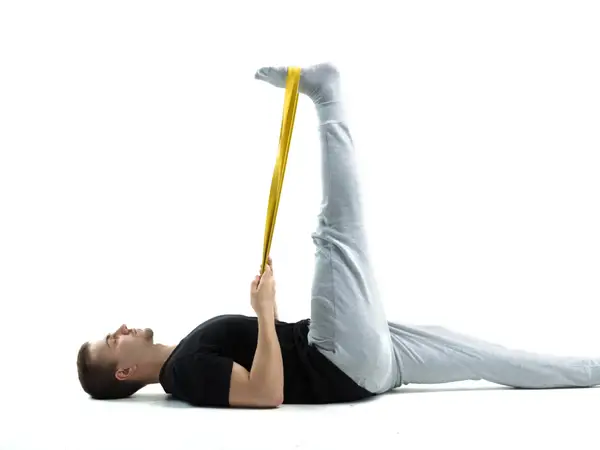
A basic exercise that works the muscles in the back of the leg, which attach to the pelvis and affect how the hips and lower back move, is the hamstring stretch. This stretch relieves strain in the buttocks, lengthens the hamstring muscles, and lessens muscular imbalances. To establish a stretch along the back of the leg, it is usually done while standing or sitting with one leg extended and the upper body softly leaned forward. Stretching your hamstrings regularly can help you become more flexible, maintain good posture, and avoid or lessen lower back and buttock pain.
Glute Bridges:
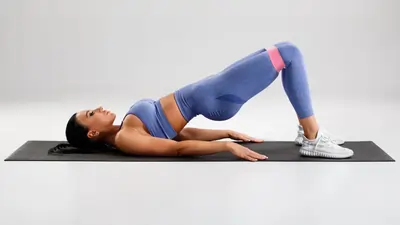
This exercise increases pelvic stability, hip mobility, and posterior chain strength. People who suffer from lower back or buttock pain as a result of weak glutes or extended sitting may particularly benefit from it. Glute bridges enhance spinal alignment, encourage good posture, and can help avoid injuries by raising the hips off the floor and squeezing the glutes at the top. All fitness levels may benefit from this low-impact workout, which is easily adaptable for increased resistance or challenge.
Clamshell Exercise:
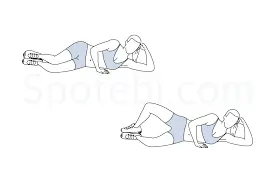
The exercise lowers the likelihood of lower back, hip, or knee pain by strengthening these muscles, which also helps to improve pelvic alignment and hip stability. It is particularly helpful in resolving muscular imbalances caused by extended sitting or bad posture. The term comes from the controlled movement of raising the upper knee while keeping the feet together, which resembles the opening of a clamshell. For athletes and others recuperating from injuries, this low-impact exercise is frequently incorporated into rehabilitation regimens.
Child’s Pose:
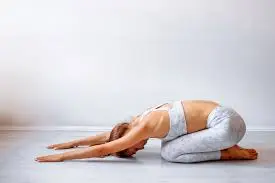
It is particularly helpful for easing lower back and gluteal pain since it helps relieve tension in the spine and buttocks. This is achieved by folding the torso forward over the thighs and extending the arms out in front or resting them by the sides. During yoga or stretching exercises, it is frequently employed as a calming pose.
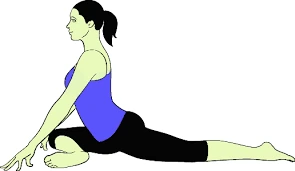
This yoga posture allows for a deep stretch across the outer hip by bending the second leg in front and stretching the first leg straight behind, with the shin resting on the floor. Pigeon Pose helps relieve accumulated stress in the pelvic area, increase hip mobility, and lessen sciatic pain. Deep breathing while maintaining the stretch also promotes mindfulness and calm.
Cat-Cow Stretch:
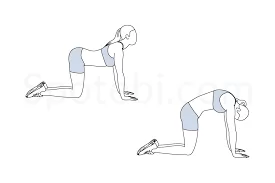
The Cat-Cow Stretch is a soft, flowing exercise that releases tension in the back, neck, and glutes while increasing spinal flexibility and mobility. It consists of switching between two positions: Cow Pose, which includes elevating the head and tailbone, and Cat Pose, which involves arching the back upward like a cat.
This stretch facilitates better posture, spinal warming, and breathing-movement synchronization. It is especially helpful in reducing stiffness in the buttocks and lower back, which makes it a useful supplement to routines for those who have back pain or lead sedentary lives.
Knee-to-Chest Stretch:
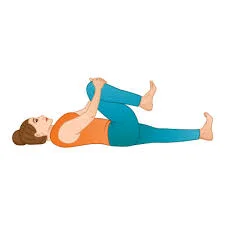
This stretch helps release tension in the buttocks and lumbar spine by drawing one or both knees toward the chest while lying on your back. It’s particularly helpful for reducing pain from tight glutes, bad posture, and extended sitting.
Additionally, this activity enhances lower body circulation, increases spinal flexibility, and may help relieve inflammation of the sciatic nerve. This calming stretch is frequently used in relaxation and rehabilitation exercises.
Butterfly Stretch:
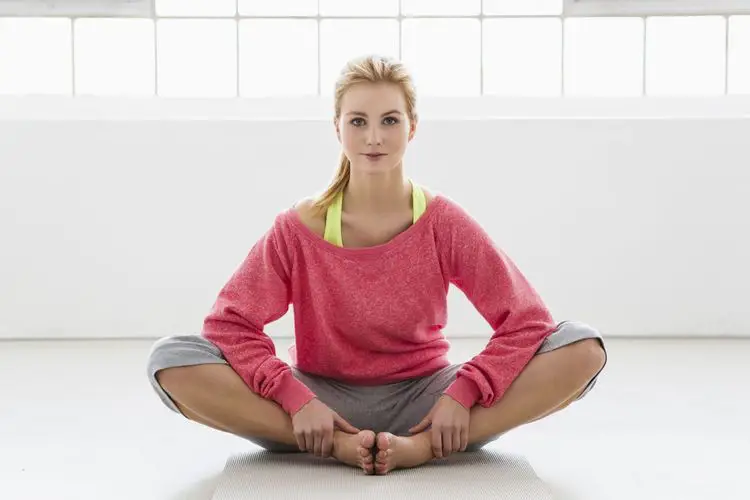
This stretch eases hip stiffness caused by extended sitting or bad posture by having the knees slowly drop toward the floor and the soles of the feet squeezed together. It is especially helpful for promoting improved posture, increasing range of motion, and releasing tension in the pelvic and buttock areas. Because of its mild yet powerful effects, the butterfly stretch is frequently used in warm-up, cool-down, and rehabilitation exercises.
Hip Flexor Stretch:
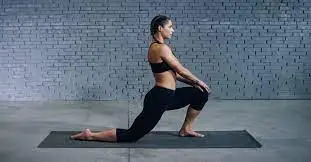
The purpose of the Hip Flexor Stretch is to stretch and relax the hip flexor muscles, which are frequently tense from extended sitting or bad posture. Keeping the opposing knee bent at a 90-degree angle while extending one leg behind the torso promotes improved posture, pelvic alignment, and general flexibility. It’s particularly helpful for avoiding muscular imbalances and easing hip and gluteal pain.
Walking:
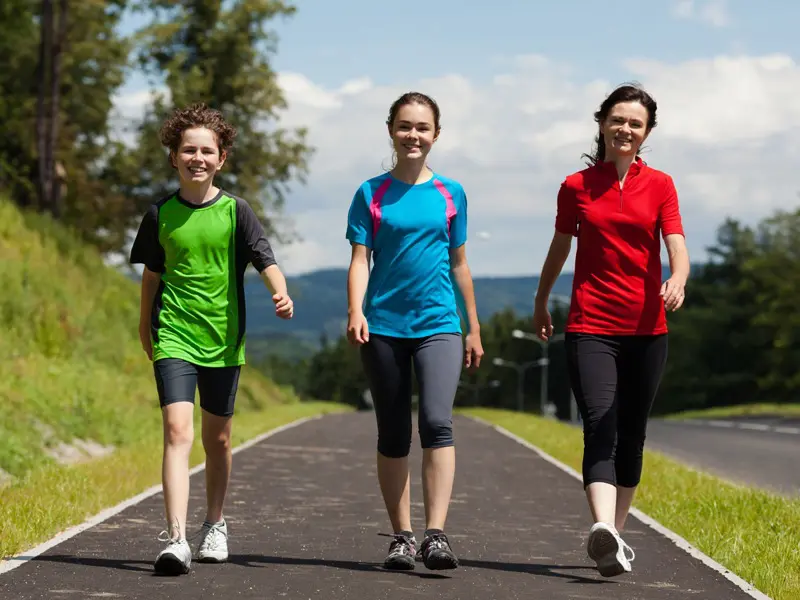
Walking is an accessible, low-impact activity that has many positive effects on both physical and mental health. It works a variety of muscle groups, such as the calves, hamstrings, and glutes, strengthening the lower body and enhancing circulation and joint mobility. Walking also improves mood, lowers stress levels, and supports cardiovascular health. For persons of all fitness levels, it is a safe and efficient activity that is frequently suggested for preserving mobility and easing moderate musculoskeletal pain.
Bird Dog:
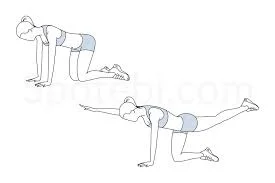
This exercise, which is done on all fours, simultaneously extends one arm and the opposing leg before controlling the return to the starting position. It is especially useful for reducing lower back and buttock pain because it strengthens the muscles that support the spine and pelvis. The Bird Dog is a useful supplement to core training, rehabilitation, and injury prevention regimens because it promotes good posture and spinal alignment.
Dead Bug:
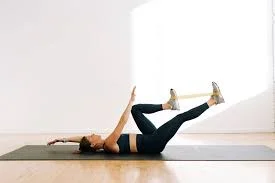
The Dead Bug is a controlled core workout that works the hip flexors and glutes while strengthening the abdominal muscles and stabilizing the spine. The exercise, which is done while lying on your back with your arms and legs lifted, includes lowering the opposing arm and leg at the same time while maintaining a flat lower back.
By teaching appropriate pelvic control, this exercise enhances core stability, improves coordination, and lessens lower back pain. The Dead Bug is particularly helpful for people who are recuperating from back pain or who want to develop fundamental core strength in a low-impact, safe way.
Standing Hip Extension:

Standing hip extension is a straightforward yet powerful exercise that strengthens and stabilizes the hips while targeting the hamstrings and gluteus maximus. To increase balance and stimulate the posterior chain, stand up straight and stretch one leg backward without bending the knee. It is especially helpful for people who have tight hip flexors, weak glutes, or lower back pain. They may be performed anywhere without the need for special equipment.
Side-Lying Leg Raises:
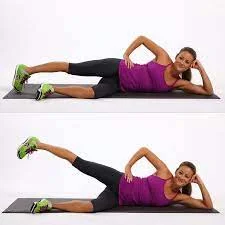
This exercise, which involves reclining on one side and carefully raising the upper leg upward, enhances muscular endurance, hip stability, and balance. It is particularly helpful for resolving hip and buttock tension, promoting proper knee alignment, and addressing muscular imbalances. To improve lower-body strength and encourage appropriate movement mechanics, side-lying leg raises are frequently utilized in physical therapy, injury prevention, and fitness regimens.
Wall Sit:
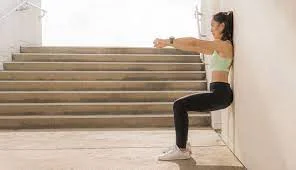
An isometric lower-body exercise that works well for the quadriceps, hamstrings, and glutes is the wall sit. Wall sits are very helpful for strengthening the gluteal muscles to release stress in the lower back and buttocks, improving posture, and increasing hip and knee stability. This easy yet difficult exercise is frequently incorporated into strength-training regimens and recovery plans.
Prognosis:
The underlying reason, the severity of the ailment, and the patient’s reaction to therapy all play a significant role in the prognosis for buttock muscle pain. In the majority of instances, people recover completely or significantly with appropriate rest, physical therapy, focused workouts, and lifestyle changes.
While chronic disorders like sciatica or piriformis syndrome may require longer-term care, acute muscle strains or moderate nerve irritations typically resolve in a few weeks. Recurrence risk can be decreased, and results can be significantly enhanced with early diagnosis and regular commitment to a rehabilitation plan.
Prevention of Buttock Muscle Pain:
Maintaining strong, flexible muscles and forming good movement patterns are key to preventing buttock muscle soreness. It’s critical to take regular breaks from extended sitting, particularly if you lead a sedentary lifestyle or work a desk job.
Muscle overuse and injury can also be avoided by warming up before exercise, doing physical activities with good form, and progressively increasing workout intensity. Long-term prevention also involves addressing underlying problems, such as arthritis or sciatica, and wearing supportive footwear.
Complications of Buttock Muscle Pain:
Buttock muscle pain can cause several issues that impact mobility, posture, and quality of life if it is not addressed or is not adequately controlled. Chronic pain can arise, resulting in ongoing pain that makes it difficult to perform daily tasks like sitting, sleeping, or walking.
Poor pelvic alignment caused by muscular weakness or imbalance might worsen hip joint issues or lower back pain. Nerve compression and pain extending down the leg can occasionally result from the worsening of underlying disorders like sciatica or piriformis syndrome.
Additionally, compensation by other muscles may raise the risk of lower back, hip, or knee injuries. To avoid these long-term problems, early diagnosis, appropriate treatment, and preventative care are crucial.
Conclusion:
A frequent problem, buttock muscle pain can be caused by a strain on the muscles, bad posture, extended sitting, or underlying disorders like sciatica or piriformis syndrome. Even while it’s usually not significant, if ignored, it can cause long-term pain and decreased mobility.
Thankfully, most instances may be successfully controlled or completely healed with prompt intervention, which includes targeted workouts, appropriate stretching, posture correction, and lifestyle changes.
Maintaining healthy gluteal muscles and avoiding more pain requires an understanding of the origins, symptoms, and available treatments. For long-term comfort and general musculoskeletal health, early care and regular preventative measures are crucial.
FAQs
It is best to get medical help right away if the buttock pain is severe, ongoing, or accompanied by additional symptoms, including tingling, numbness, trouble walking, or problems with the bladder or intestines. These might point to a more serious underlying condition that needs to be evaluated and treated by a specialist.
Stoop forward a little from the hips and cross your heel over your knee. A stretch should be felt deep within your buttocks. For 20 to 30 seconds, hold.
Your hip might not be able to handle a lot of walking in the early phases of your recuperation. However, while you heal, walking can assist in increasing the weight-bearing capacity of your gluteal tendons and get them ready for running again. You may get your gluteal tendons ready for running again by walking.
Lack of activity, age, and extended sitting are some of the causes of buttock loss, which manifests as a flattened or sagging look. These elements may result in weakening of the gluteal muscles, a disorder known as gluteal amnesia or “dead butt syndrome” that impairs the muscle’s capacity to contract correctly.
References:
- Nwachuku, A., DO. (2023c, March 3). What causes buttock muscle pain, and how to relieve it. Spine-health. https://www.spine-health.com/blog/what-causes-buttock-muscle-pain-and-how-to-relieve-it
- Hip and buttock pain physiotherapy : East Cheshire NHS Trust. (n.d.-b). https://services.eastcheshire.nhs.uk/physiotherapy/self-help/shoulder-pain-physiotherapy-2
- Bridges. (n.d.-d). [Video]. Hingehealth. https://www.hingehealth.com/resources/articles/buttock-pain-when-sitting-and-lying-down/
- Dumain, T. (2023c, June 2). How to relieve buttock pain: 7 exercises to try. CreakyJoints. https://creakyjoints.org/diet-exercise/buttock-pain-exercises/
- Watson, S. (2024c, June 13). What’s causing this pain in my buttocks? Healthline. https://www.healthline.com/health/pain-in-buttocks
- Narayana Health. (n.d.-b). Narayana Health. https://www.narayanahealth.org/blog/buttock-pain-causes-and-treatment
